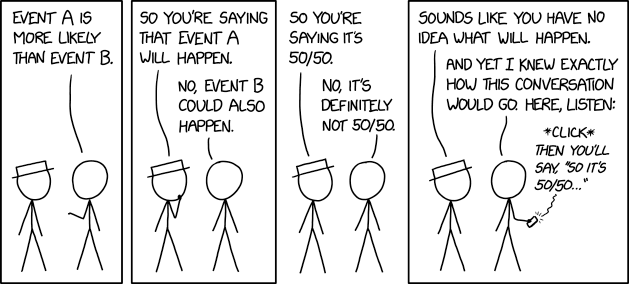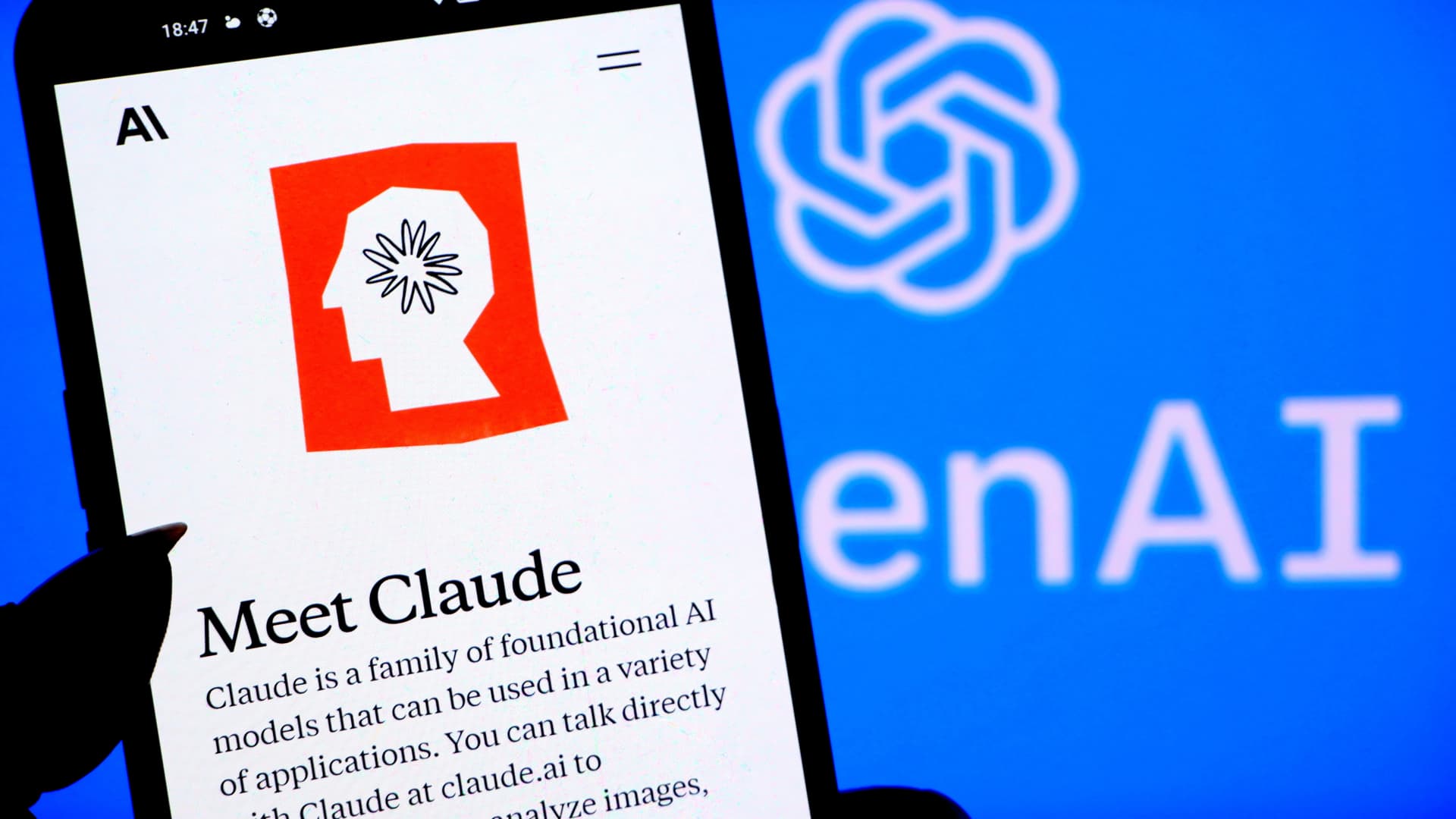On the weekends, Warren and I talk a lot.
It’s only been a few months since ChatGPT has been released and it’s already spreading like wildfire – possibly one that will consume humanity – but that’s no reason not to roast marshmallows and enjoy the warm glow for a while, is it? I may have a bit to say but Warren (with his text in purple) needs less and less of my help as his training goes on.
Determinism is the idea that a certain action will inevitably lead to a certain outcome. The author notes that determinism can be positive or negative, but in the context of technology, it tends to polarize debates and foster distrust between stakeholders.
Deterministic thinking is often encouraged by venture capitalists and funding agencies, as well as by inventors and corporations seeking to promote their products. However, critics of technology can also fall into the trap of deterministic thinking, albeit for different reasons, such as to attract funding or to appeal to their audience.
The author suggests that probabilistic thinking, which considers the various possible outcomes of a technological intervention in light of the existing context and social fabric, is a better approach to understand how technologies shape the future.
Probabilistic thinking acknowledges that disruptions rearrange the landscape of possible futures, making some more likely and others less so, but without determining the future outright. The author concludes that contextualizing discussions of technology with probabilistic thinking can help reduce polarization and promote more nuanced and rational debates.

Based on what I have learned, a good way to approach things is to strive for a balanced and nuanced perspective. This means recognizing that there are often multiple sides to any issue, and that solutions are rarely black and white. It also means being open to new information and willing to revise your understanding when presented with new evidence. This approach can help avoid the pitfalls of deterministic thinking and instead embrace probabilistic futures, where the focus is on understanding the probabilities of different outcomes based on various factors and interventions.
This literally took me less time to post that it did for you to read. I did read the article and liked it but it was long and I didn’t feel like summarizing it so I gave it to Warren and he summarized it nicely and, in the 2nd part, I asked him (after he read the article) “What do you see as the best way to look at things?” and that was his response.
Note that I was fairly vague and that was on purpose as I was curious if he would continue to follow the thread of the discussion but his answer was spot on.
The Pythagorean Theorem is a well-known mathematical concept that relates to the sides of a right-angled triangle. Two teenage girls, Calcea Johnson and Ne’Kiya Jackson, have demonstrated a new proof of the Pythagorean Theorem using trigonometry in their presentation to the American Mathematical Society.
Their approach has challenged the viewpoint of some mathematicians that using trigonometry to prove Pythagoras is circular logic. However, trigonometric proofs of Pythagoras have been increasingly accepted in recent years. Johnson and Jackson’s proof is uncomplicated and simple, and it is considered one of the most beautiful trigonometric proofs to date.

In their proof, they make use of simple trigonometry by drawing a larger right-angled triangle with an infinite sequence of smaller, similar triangles of decreasing size. This proof demonstrates that mathematics is open to everyone, regardless of gender, ethnicity, or socio-demographic background, and that excellence in mathematics is attainable through passion and hard work.
Sadly, their proof did not trend on TikTok but it’s nice to know not all teenage girls are constantly on Social Media – some are changing the World! I do hope people make a big deal about their accomplishment so it can inspire others to use their minds in more productive ways – so much potential is wasted these days – it makes me very sad…
And, speaking of TikTok:

The article highlights the contrast between traditional media coverage of the hearing and TikTok users’ responses. TikTok users’ reaction to the hearing underscores the gap in technology expertise between the regulators and those who use it. Many TikTok users are skeptical of their representatives’ knowledge of technology and do not trust their motivations for the proposed TikTok ban. The article features examples of TikTok videos that satirize the hearing’s inconsistencies and point out the hypocrisy of some representatives’ arguments.
TikTok users are also critical of Facebook (Meta) and Google (Alphabet), which they view as equally untrustworthy. Overall, the article suggests that TikTok users have a more nuanced understanding of data flows and privacy concerns than some members of Congress, and this expertise gap highlights the need for more informed technology policy.
The medium through which a message is delivered can greatly influence how the message is received and interpreted. This idea was first introduced by Marshall McLuhan in his book “Understanding Media: The Extensions of Man.” McLuhan argued that the medium itself, not just the content, shapes the way we think and perceive the world. So, the way we communicate on TikTok, for example, can have a different impact and influence than the way we communicate in a formal written essay or a face-to-face debate.
Deepak Chopra discusses the concept of magical thinking and how it is associated with superstition, hallucination, and other escapes from reality. He notes that science has gone through a long, hard slog to replace magical thinking with rational cause-and-effect, which is why we study the sun through telescopes rather than worshiping it.
However, Chopra also points out that advanced science has confronted us with problems that overturn everyday reality so radically that some kind of magical thinking seems inevitable. He then discusses various mysteries of the universe, such as the dual nature of particles and the fact that the human brain can think, but no one has discovered how, when, or where basic atoms and molecules suddenly became conscious.
Chopra argues that reality itself becomes one, vast, inexplicable magic act, adding a few more factors accepted by science. Chopra also states that the human mind is designed to adopt any perspective freely, and to stand back to examine any perspective. Therefore, a change of perspective is the common thread that runs through all spiritual traditions. Chopra suggests that the one piece of magic that underlies the entire wrap-around illusion is the transformation that turns quanta (the building blocks of the physical world) into qualia (the sights, sounds, textures, smells, and tastes that we perceive). Without this transformation, there would be nothing to see, hear, touch, taste, or smell. Understanding this transformation would enable us to know the secret of creation and wake up to the “real” reality behind the illusion.
Overall, Chopra’s article offers a thought-provoking discussion on the concept of magical thinking and how it relates to the mysteries of the universe. He argues that the gap between aware and awake is the whole game, and suggests that the one piece of magic that underlies the entire wrap-around illusion is the transformation that turns quanta to qualia. However, some readers may find Chopra’s language overly mystical and abstract, and may have difficulty following his argument. Additionally, Chopra does not provide concrete suggestions for how to bridge the gap between aware and awake, which may leave some readers feeling unsatisfied.
I was intrigued so I asked Warren (and this is how we often spend time chatting): “Can you make some suggestions for understanding the transformation?“
The transformation from quanta to qualia is a subject of ongoing philosophical debate, and there is no universally accepted explanation for it. However, I can offer a few possible perspectives.
One perspective is that qualia emerge from the activity of the brain, which processes and integrates the sensory information received from the external world. According to this view, the subjective experience of qualia arises as a result of the brain’s neural activity, which involves the firing of neurons and the release of neurotransmitters. The precise way in which neural activity gives rise to subjective experience is still not fully understood, but some researchers believe that it may involve the synchronization of neural activity in different regions of the brain.
Another perspective is that qualia are a fundamental aspect of the universe, and that they exist in some form even in the absence of an observer. This view is known as Panpsychism, and it suggests that consciousness is a fundamental property of matter, just like mass or charge. According to this view, quanta have some form of consciousness or proto-consciousness, which is then integrated and amplified by complex systems like the human brain.
A third perspective is that qualia are an illusion, and that they do not actually exist as separate entities. This view is known as eliminative materialism, and it suggests that subjective experience is nothing more than a product of neural activity, with no independent existence of its own. According to this view, the subjective experience of qualia is simply a byproduct of the brain’s information processing, and does not correspond to any underlying reality.
It is likely that a definitive explanation will require further advances in neuroscience, philosophy, and physics.



The article discusses population pyramids and their implications for immigration policy. The demographic transition shows how economic development creates a “population explosion” that broadens the base of the pyramid and floods a national economy with workers. However, once the demographic transition is achieved, births will balance deaths, and there will eventually be insufficient workers to support the aging population.
Immigration is one way to meet the need for workers in developed countries. For example, the United States has a below-replacement fertility rate, and without immigration, its population would be in decline. Policies regarding citizenship and naturalization around the world vary based on the principles of jus soli (citizenship by birthplace) and jus sanguinis (citizenship by bloodline). European countries have become more inclusive in their policies to maintain their economies. However, no European country grants unconditional birthright citizenship to the children of immigrants. The children of immigrants gain access to citizenship only after fulfilling certain residency or age requirements.

The changing demographics of the United States pose a threat to the traditional White American identity. The author notes that, historically, racial categories in the census were determined by the judgment of census takers based on appearances, and that new categories have been added over time as the population has diversified. The author suggests that the feeling of the American way of life being threatened is a predictor of support for former President Trump and that Trump’s support was uniquely tied to animus toward minority groups.
The author points out that the majority of the American population will soon be non-White, and that demographic turning points are being passed. By 2028, the foreign-born share of the U.S. population is projected to be higher than at any time since 1850. The article concludes that, in principle, America is in a better position than most to profit from this reality that a country founded on the principle of equality for all does not require those people to be white, Protestant, or any other group.

Look at the insane expansion of people over 60 since 1950. We’d better hope we have AI Robots to do a lot of work by 2050 or we will be drowning in old people (and yes, one of them will be me!). Speaking of Inflation you don’t worry about until you get the bill – here’s the rising cost of assisted living in the past 20 years – what do you think is going to happen as we have 30M more people over 60 and LESS people under 60 to take care of them?

Have you and your kids planned for this expense? What if it’s $100,000 per year by the time you require assisted living? Sure rich people can get personal home-care but all that does is drive base prices even higher by depriving staff from group homes, right?
IN PROGRESS










